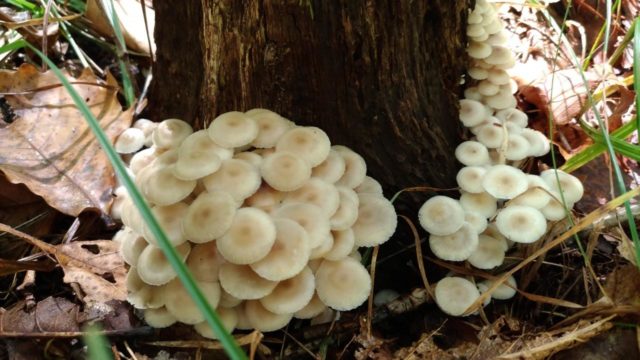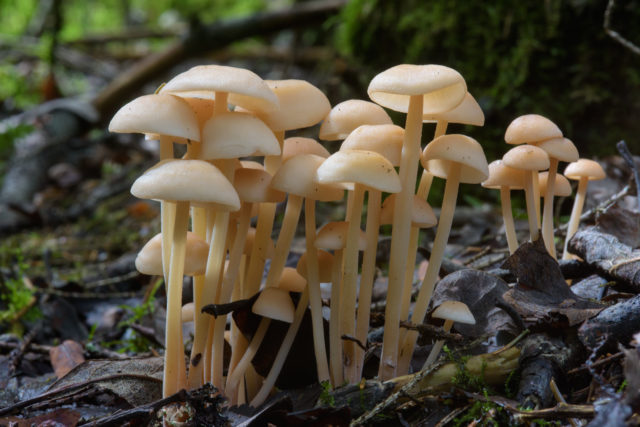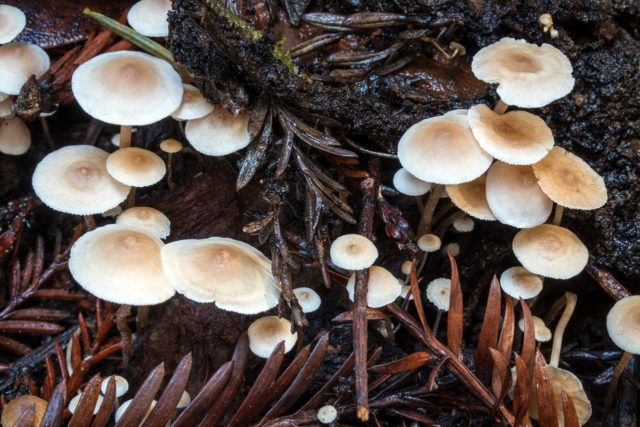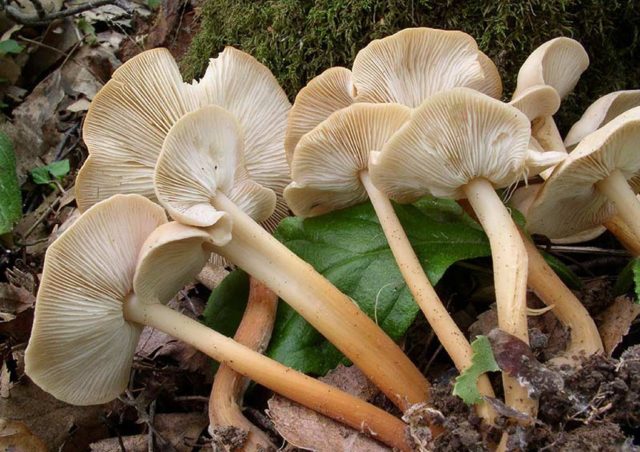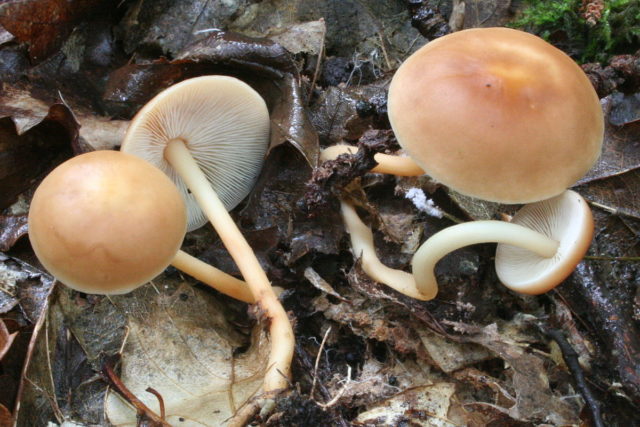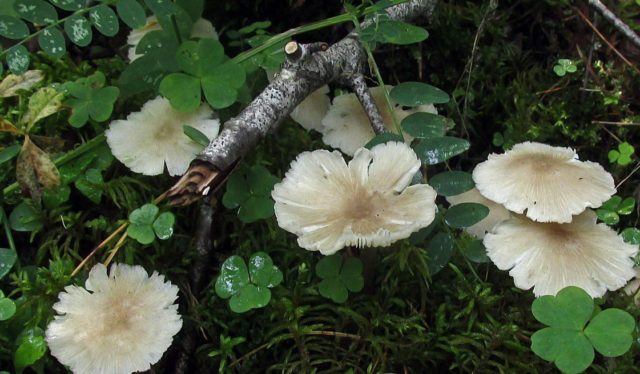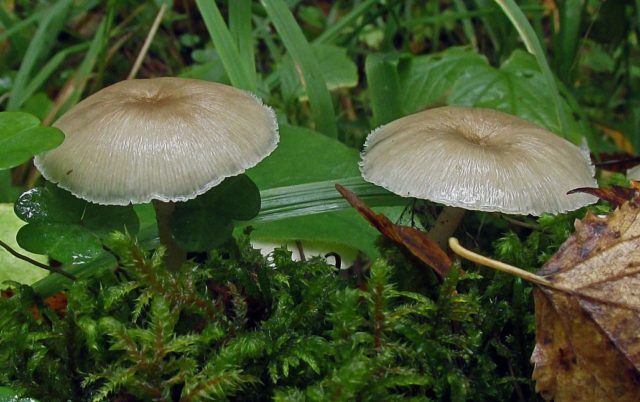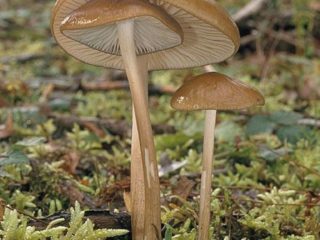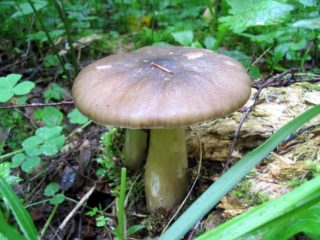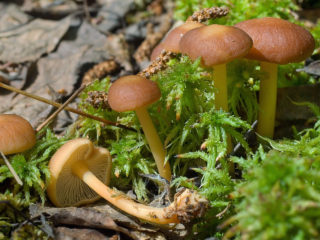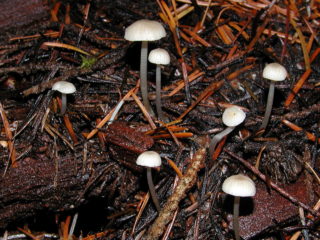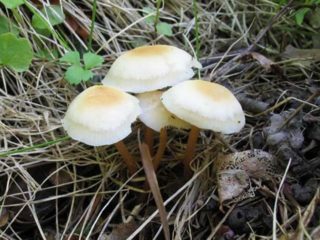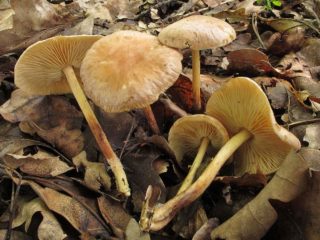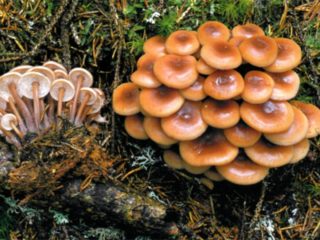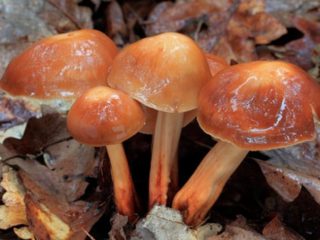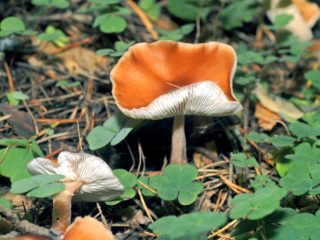Content
Family colliery - a representative of the Negniychnikov family, tasteless with the smell of rotten wood. It occupies the last niche in the 4 category of mushrooms - conditionally edible.
What does a family collibia look like?
The color of the fruiting body depends on the wood on which the fungus parasitizes and on lighting.
Description of the hat
Collibia family is a small mushroom, the diameter of the cap in adult specimens is within 2 cm.
External characteristic:
- the shape is round, convex, in an overripe mushroom it can be concave;
- the surface is smooth, dry, in the central part there is a tuberous cylindrical formation, it is present in young and mature specimens;
- the middle is light brown, closer to the edge of the cap, the shade brightens, becomes beige;
- concentric circles are well defined on the surface;
- the edges are even or serrated from the spore-bearing plates protruding beyond the perimeter of the cap;
- plates are located rarely with a clear border near the fruit stem;
- spores are presented in the form of an elongated oval with a white powder.
The pulp is thin, fragile with a woody smell and lack of taste.
Leg description
The family clithocybula forms a long (up to 8 cm) leg, the thickness of which does not exceed 1.5 cm.
The shape is cylindrical, depending on the growth density, slightly flat, curved, hollow. The structure is fibrous, rigid. Above, the surface is light, below it is darker in color, lined.
Is the mushroom edible or not
In gastronomic terms, the fruiting body is of no value. The flesh is thin, the leg is tough. Complete lack of taste both raw and after processing. The foul smell of rotten wood does not add to the popularity.
If the fruiting body is not sufficiently cooked, the dish can cause intestinal upset and pain in the epigastric region. The collection season for colibacillosis is at the beginning of autumn, when a large number of more valuable species appear. In order not to put yourself at risk of poisoning, it is better to opt for edible specimens.
Where and how it grows
The main distribution area is the Central, North-Western, Central Black Earth, Ural region. The saprophyte fungus parasitizes on deadwood and old stumps of deciduous trees. Forms families that grow from one site in the form of a rosette. The density on one mycelium is from 6 to 15 pieces. Prefers damp, shaded areas.
Doubles and their differences
The wood-loving colibia (Gymnopus dryophilus) is considered to be the twin of the family colibia.
The varieties of the family are similar in size, location and growth mode. They are distinguished by their appearance:
- the twin has a sloping spheroidal cap without a tuberous fragment in the center;
- gymnopus dryophilus is distinguished by a light brown color in mature fungi, in young specimens it is lighter, translucent;
- in wood-loving colibia, the plates are rarely located, poorly attached to the cap, brown dots or stains are visible on them;
- leg - 5-6 cm, hard, light brown, dry, splits into longitudinal ribbons at the cut site.
The nutritional value of the double is the same as that of the colibia.
Similar (in appearance and method of growth to the family clitocybula (Clitocybula abundans)) plentiful colibia (govorushechka).
The fruiting body contains toxins, causing food poisoning. It grows in small families on stumps or on a leafy cushion, on mosses. Smaller, short, fragile, hollow stem. The hat is dry, glossy with ragged edges, light gray. There is a depression in the central part. Along the surface of the strip. Bitter taste, no smell.
Conclusion
Colibia family - conditionally edible mushroom culture, tasteless, with an unpleasant rotten smell. It grows on stumps and deadwood of deciduous trees, forms families. Does not represent nutritional value, can cause mild food poisoning.
